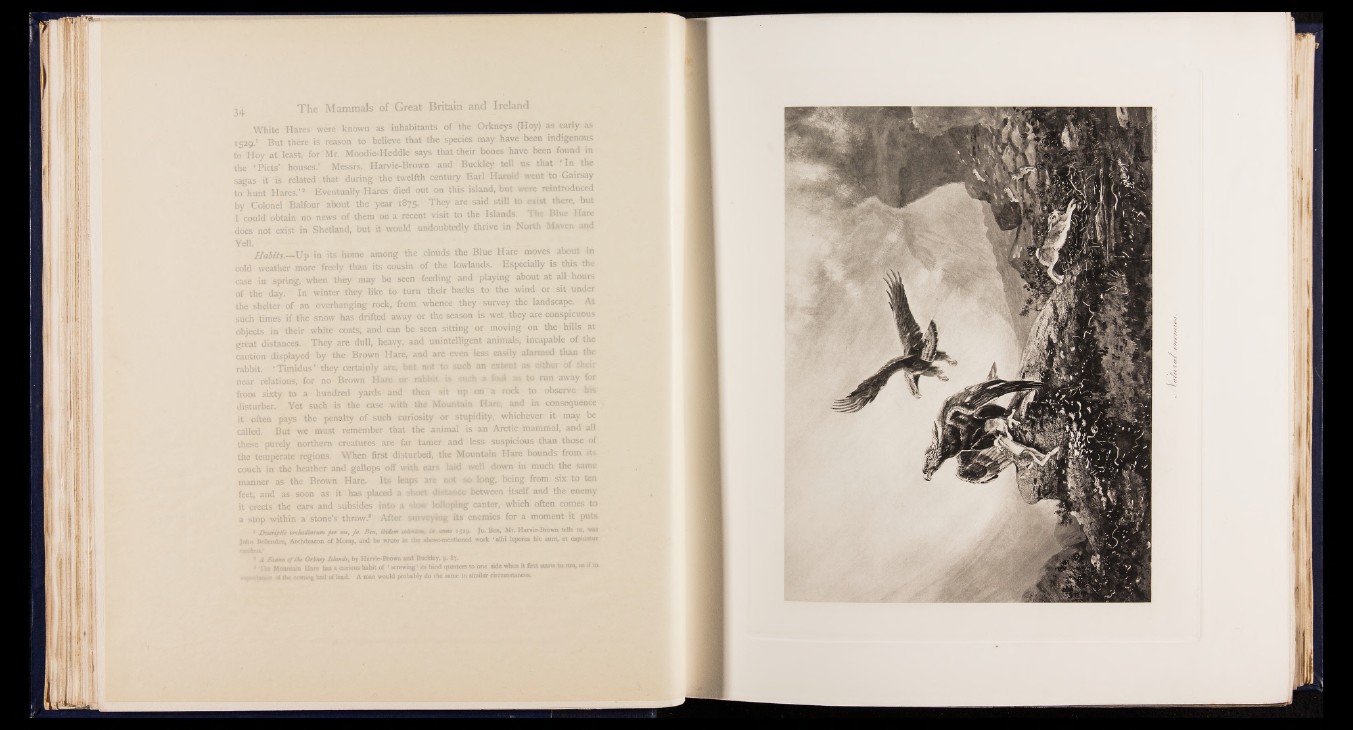
White Hares were known as inhabitants of the Orkneys (Hoy) as early as
1529/ But there is reason to believe that the species may have been indigenous
to Hoy at least, for Mr. Moodie-Heddle says that their bones have been found in
the 'Piets’ houses.’ Messrs. Harvie-Brown and Buckley tell us that ‘ In the
sagas it is related that during the twelfth century Earl Harold went to Gairsay
to hunt Hares.’ 5 Eventually Hares died out on this island, but were reintroduced
by Colonel Balfour about the year 1875. They are said still to ea st there, but
I could obtain no news of them on a recent visit to the Islands. The Blue Hare
does not exist in Shetland, but it would undoubtedly thrive in North Maven and
Yell.
Habits.— Up in its home among the clouds the Blue Hare moves about in
cold weather more freely than its cousin of the lowlands. Especially is this the
case in spring, when they may be seen feeding and playing about at all hours
of the day. In winter they like to turn their backs to the wind or sit under
the shelter of an overhanging rock, from whence they survey the landscape. At
such times if the snow has drifted away or the season is wet they are conspicuous
objects in their white coats, and can be seen sitting or moving on the hills at
great distances. They are dull, heavy, and unintelligent animals, incapable of the
caution displayed by the Brown Hare, and are even less easily alarmed than the
rabbit. ‘ Timidus’ they certainly are, but not to such an extent as either of their
near relations, for no Brown Hare or rabbit is such a fool as to run away for
from sixty to a hundred yards and then sit up on a rock to observe his
disturber. Yet such is the case with the Mountain Hare, and in consequence
it often pays the penalty of such curiosity or stupidity, whichever it may be
called. But we must remember that the animal is an Arctic mammal, and all
these purely northern creatures are far tamer and less suspicious than those of
the temperate regions. When first disturbed, the Mountain Hare bounds from its
couch in the heather and gallops off with cars laid well down in much the same
manner as the Brown Hare. Its leaps are not so long, being from six to ten
feet, and as soon as it has placed a sheet distance between itself and the enemy
it erects the ears and subsides into a slow lolloping canter, which often comes to
a stop within a stone's throw.' After surveying its enemies for a moment it puts
' O sir ifU , irthadhrum fo r mo, Jo. B n , itiim o i l . m o»m IS>9- 1» Ben, Mr. Heme-Brown tells lie, wee
Join, llellenden, Archdeacon of Moray, and he wrote in the above-mentioned work 1 albi lepores hie sunt, et capiunlur
* A Fauna o f the Orkney Islands, by Harvie-Brown and Buckley, p. 87.
* The Mountain Hare has a curious habit of * screwing ’ its hind quarters to one side when it first starts to run, as if in
of the coming hail of lead. A man would probably do the same in similar circumstances.